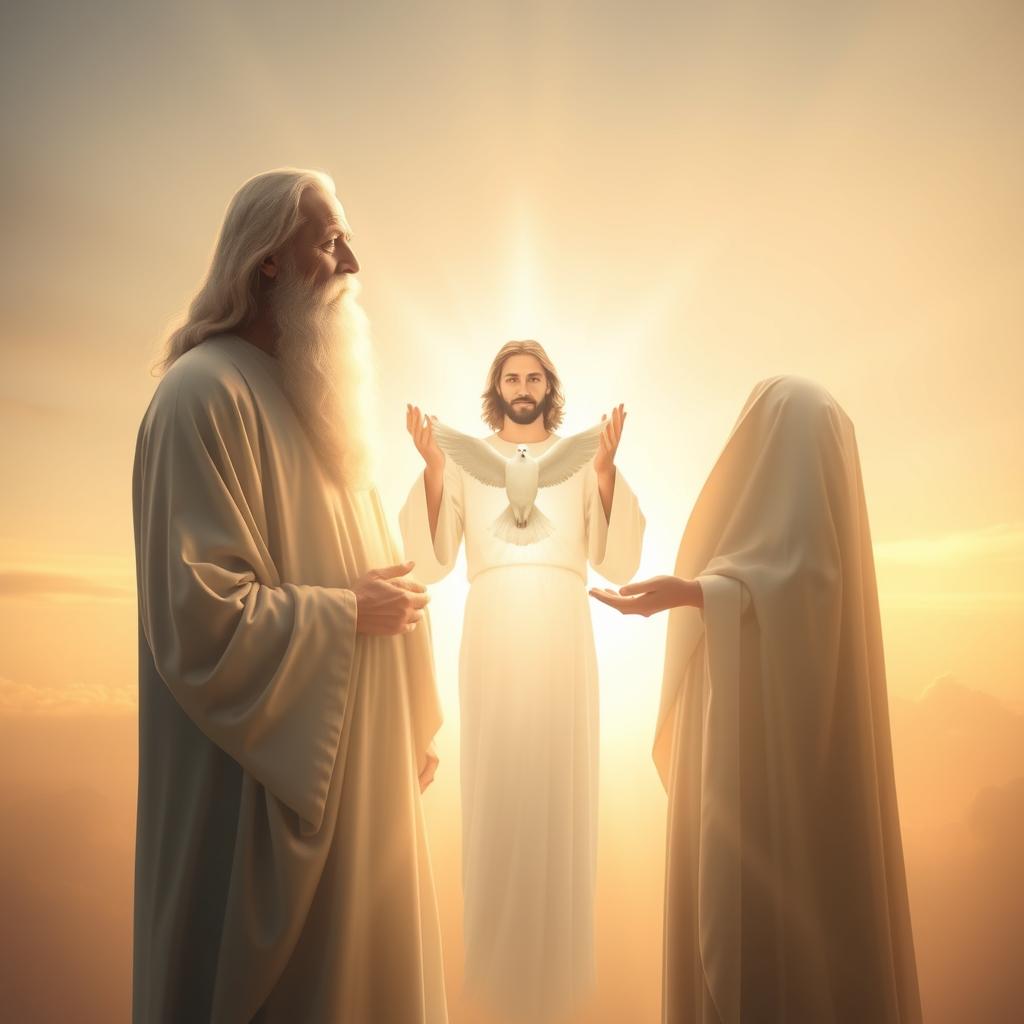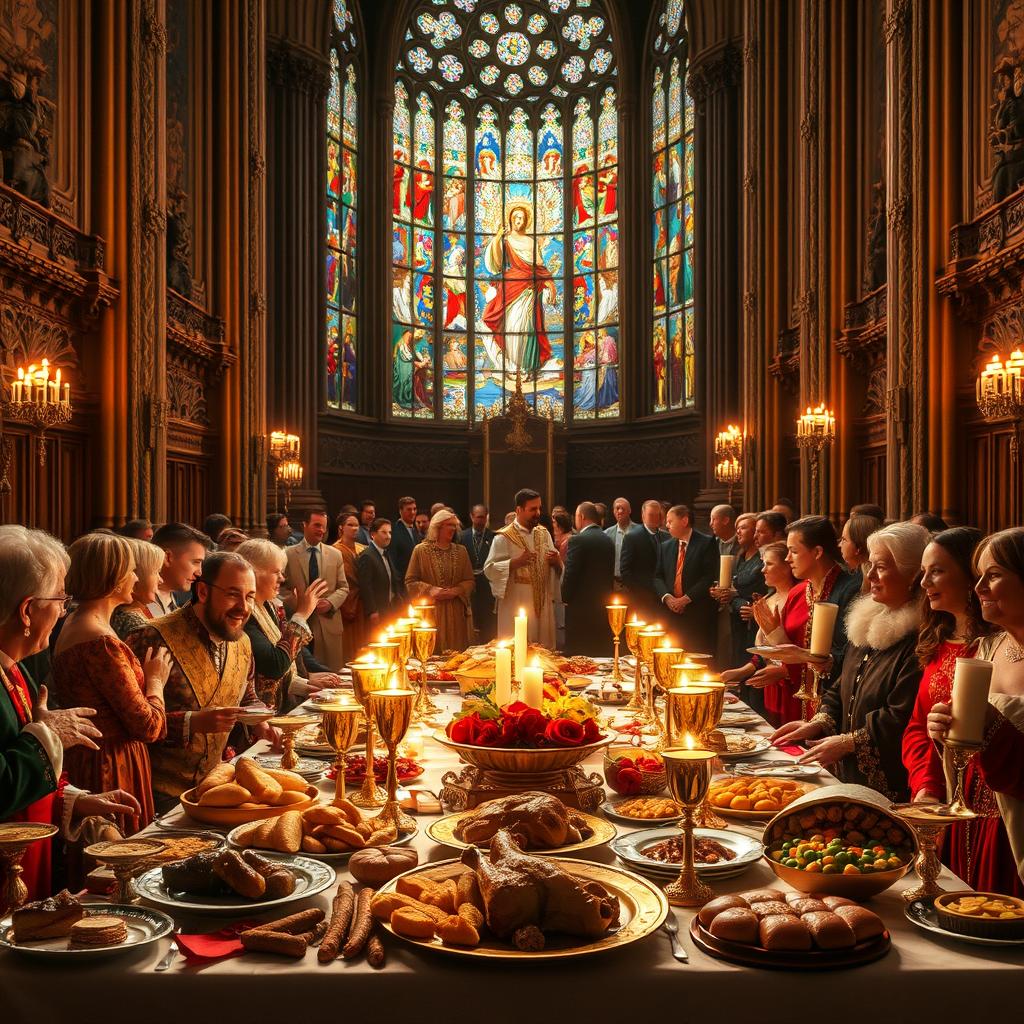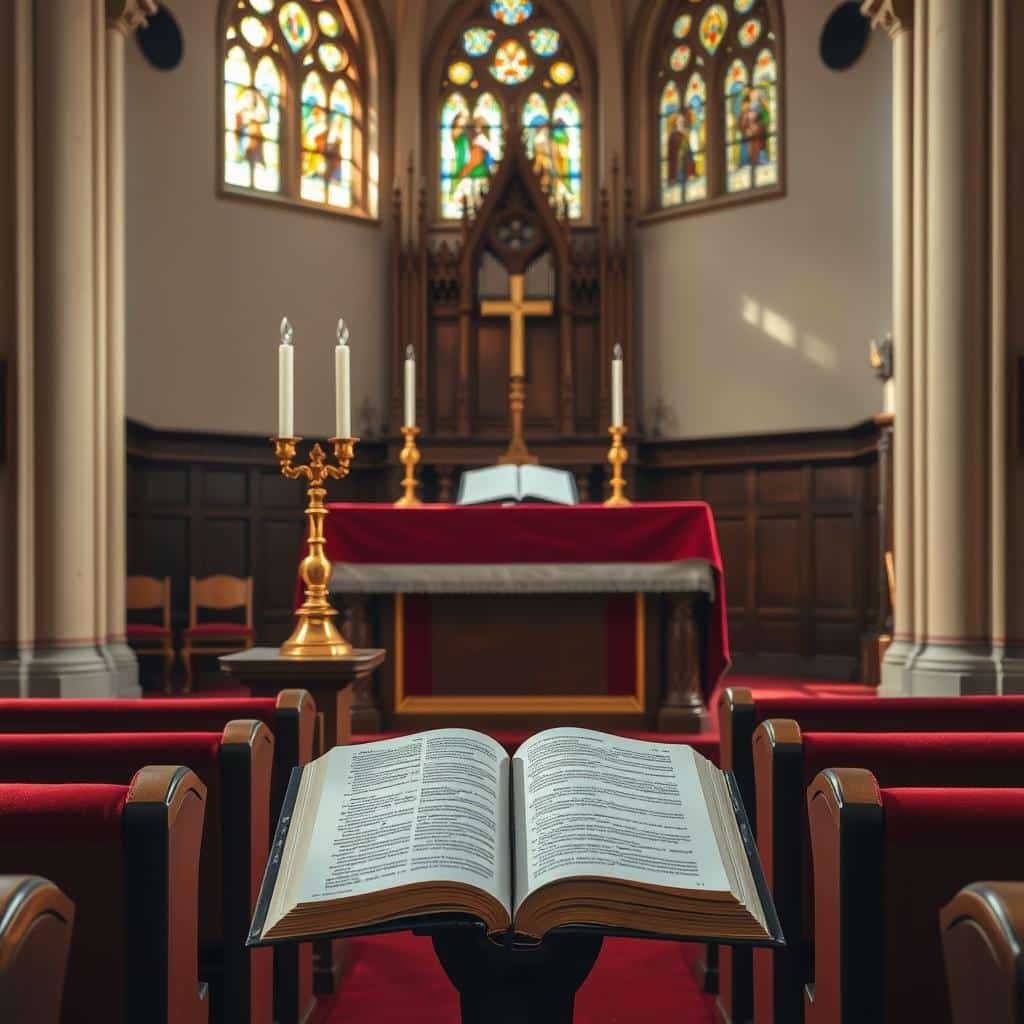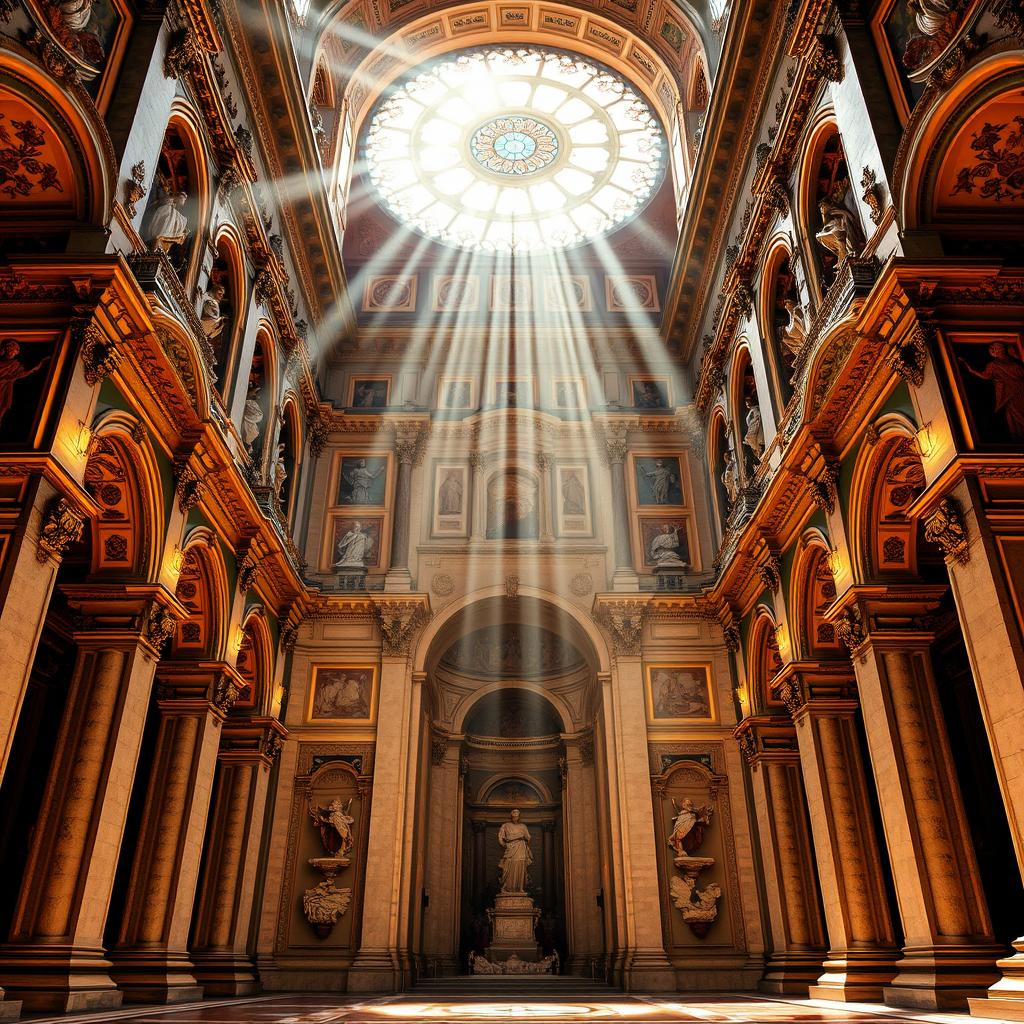The holy trinity is a profound mystery at the heart of Christian faith. It represents one God in three divine persons: Father, Son, and Holy Spirit. This fundamental doctrine is celebrated during the Solemnity of the Holy Trinity.
The Catechism of the Catholic Church teaches that the mystery of the blessed trinity is central to Christian faith and life, enlightening all other mysteries of faith. The history of salvation reveals the way God, as Father, Son, and Holy Spirit, reconciles and unites with humanity.
Through readings like Proverbs 8:22-31, Romans 5:1-5, and John 16:12-15, we gain insight into the divine persons and their relationship with us, deepening our understanding of God’s love.
Read More: The Fascinating Intersection of Carl Jung and Karma
The Mystery of the Trinity Revealed
At the heart of Christian faith lies the mystery of the Trinity, a divine reality that has been the subject of contemplation and reverence. This central mystery is not a puzzle to be solved but a profound truth to be embraced and understood.
The Central Mystery of Christian Faith
The Trinity stands as the cornerstone of Christian belief, revealing that God is not a solitary being but exists eternally as a communion of three divine Persons: the Father, the Son, and the Holy Spirit. This doctrine is foundational to understanding the nature of God and His relationship with humanity.
The concept of the Trinity is rooted in the understanding that God is one in three coequal and coeternal Persons. It is a mystery that has been carefully articulated through various councils and creeds in Christian history.
One God in Three Divine Persons
The divine Persons do not share the one divinity among themselves; rather, each of them is God whole and entire. As stated by the Fourth Lateran Council of 1215, “Each of the persons is that supreme reality, viz., the divine substance, essence or nature.”
| Aspect of Trinity | Description |
|---|---|
| Unity | The Trinity is one God in three Persons, emphasizing the unity and coequality of the Father, Son, and Holy Spirit. |
| Divine Persons | The three Persons are distinct yet inseparable, sharing the same divine nature and essence. |
| Mystery | The Trinity is a mystery that transcends human comprehension, inviting believers into a deeper relationship with God. |
Understanding the Trinity helps believers appreciate that unity and diversity are not opposed but can exist in perfect harmony, reflecting the very nature of God.
Biblical Foundations of the Trinity
The concept of the Holy Trinity is deeply rooted in the scriptures, with hints and foreshadowings present throughout the Bible. While the doctrine of the Trinity is fully revealed only in the New Testament, the Old Testament contains significant foreshadowings and hints of God’s triune nature.
Trinitarian Hints in the Old Testament
The Old Testament presents intriguing plural references that suggest a plurality within God’s unity. For instance, Genesis records God’s statement, “Let us make man in our image” (Genesis 1:26), and later, “the man has become like one of us” (Genesis 3:22), indicating a complex nature within God. Moreover, the Old Testament mentions God’s Word and Spirit as seemingly distinct yet divine agents of creation and revelation, pointing toward a Trinitarian understanding.
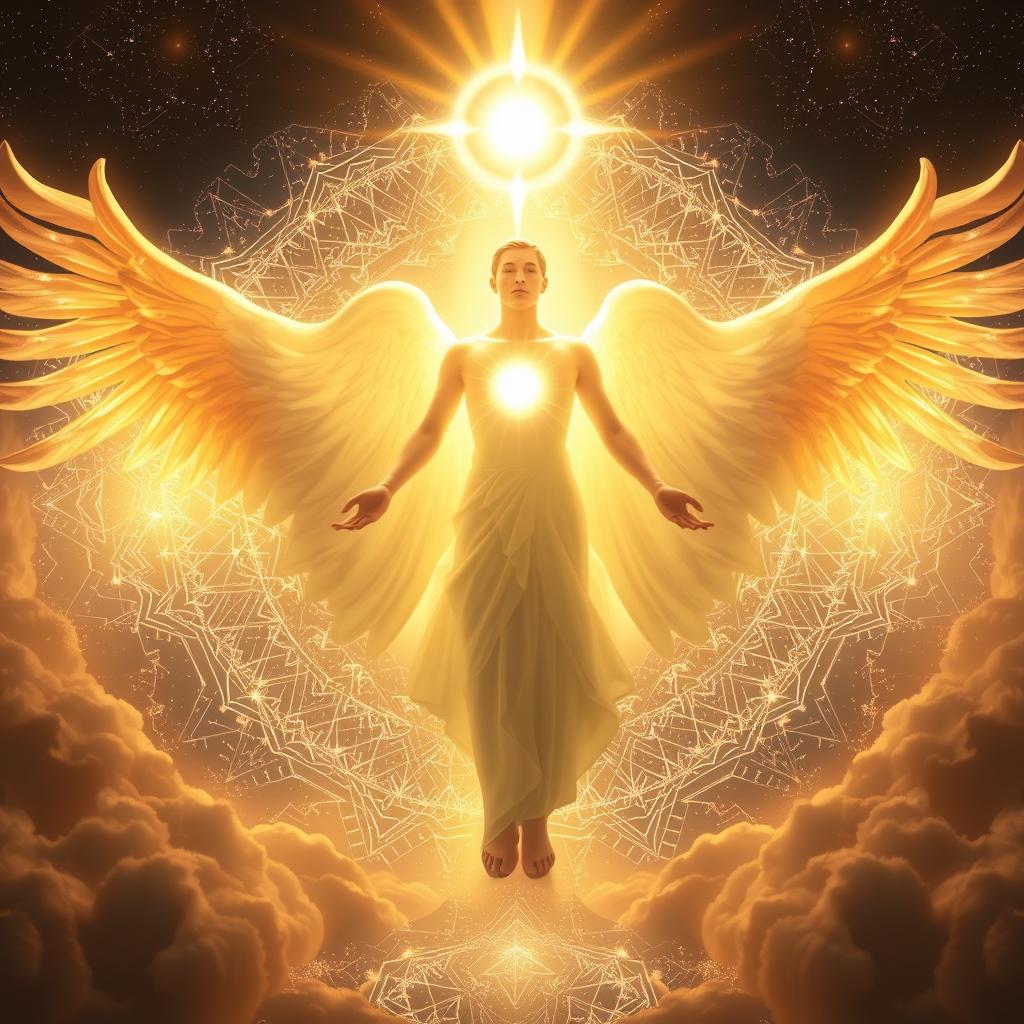
Clear Revelation in the New Testament
The New Testament provides a clear revelation of the Trinity, particularly at Jesus’ baptism, where the Father speaks, the Son is baptized, and the Holy Spirit descends like a dove. Jesus’ teachings, especially in the Gospel of John, extensively reveal the intimate relationship between the Father, Son, and Holy Spirit as distinct Persons sharing a divine nature. The Great Commission in Matthew 28:19 commands baptism “in the name of the Father and of the Son and of the Holy Spirit,” emphasizing their unity.
| Person of the Trinity | Old Testament Hints | New Testament Revelation |
|---|---|---|
| Father | God as Creator (Genesis 1:1) | Father speaking at Jesus’ baptism (Matthew 3:17) |
| Son (Jesus Christ) | Messiah prophecies (Isaiah 9:6) | Jesus baptized, recognized as Son (Matthew 3:13-17) |
| Holy Spirit | Spirit hovering over waters (Genesis 1:2) | Holy Spirit descending like a dove (Matthew 3:16) |
The biblical foundation of the Trinity emerges not from a single proof text but from the consistent pattern of revelation throughout Scripture, culminating in the New Testament. Paul’s letters frequently mention all three Persons of the Trinity working together in salvation, particularly in passages about grace, love, and spiritual gifts.
The Solemnity of the Most Holy Trinity
The feast of the Most Holy Trinity is a cornerstone of Catholic devotion, honoring the mystery of one God in three divine persons. This solemnity is celebrated on the Sunday following Pentecost, marking a significant moment in the liturgical year.
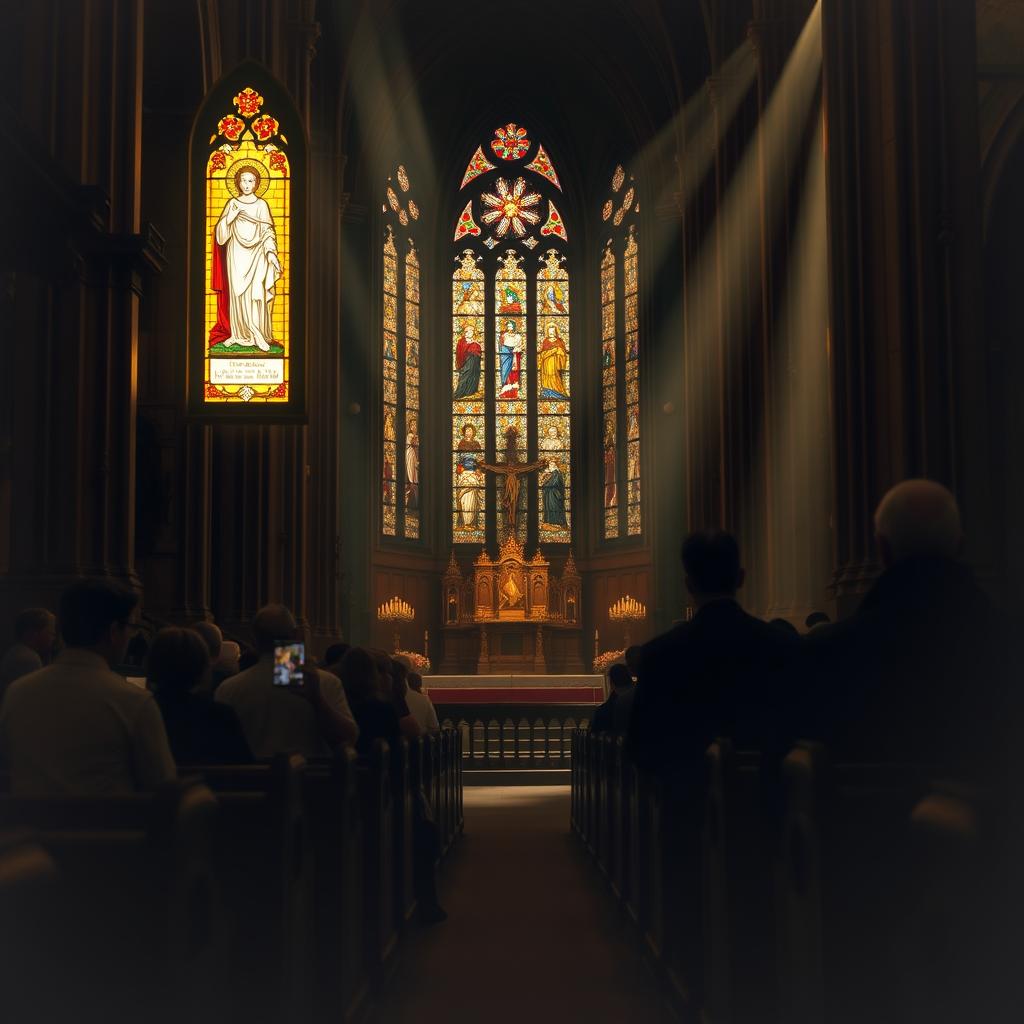
Historical Development of the Feast
The Solemnity of the Most Holy Trinity has a rich history that spans centuries. Early liturgical references to the Trinity date back to the 8th century, indicating a growing devotion to this mystery. However, it wasn’t until 1334 that Pope John XXII officially established the feast throughout the universal Church. The development of this feast was, in part, a response to heresies such as Arianism, which challenged the divinity of Christ and the unity of the Trinity.
- The feast developed gradually over the centuries, with significant milestones in its establishment.
- Pope John XXII played a crucial role in making the Solemnity of the Most Holy Trinity a universal Church celebration.
- The growth of this feast reflects the Church’s effort to affirm the doctrine of the Trinity against various heresies.
Placement in the Liturgical Calendar
The placement of the Solemnity of the Most Holy Trinity in the liturgical calendar is significant. It is celebrated on the Sunday following Pentecost, marking the transition from the Easter season to Ordinary Time. This timing follows the revelation of God’s saving plan through Christ’s resurrection and the sending of the Holy Spirit, thereby completing our understanding of God’s triune nature.
- The Solemnity serves as a synthesis of the entire liturgical year, drawing together the aspects of God revealed during Christmas, Easter, and Pentecost.
- By placing this feast at the beginning of Ordinary Time, the Church reminds believers that the Trinity is the foundation of everyday Christian living.
- This celebration transcends historical commemoration, honoring a mystery that is both beyond and revealed through history.
In 2025, the Solemnity of the Most Holy Trinity will be observed on June 15, offering Catholics a moment to reflect on the profound mystery of the holy trinity.
Reading I: Proverbs 8:22-31
On the Solemnity of the Most Holy Trinity, the first reading from Proverbs 8:22-31 reveals the eternal existence of divine Wisdom. This passage is significant as it personifies Wisdom as being present before creation, playing a crucial role alongside God in bringing the world into being.
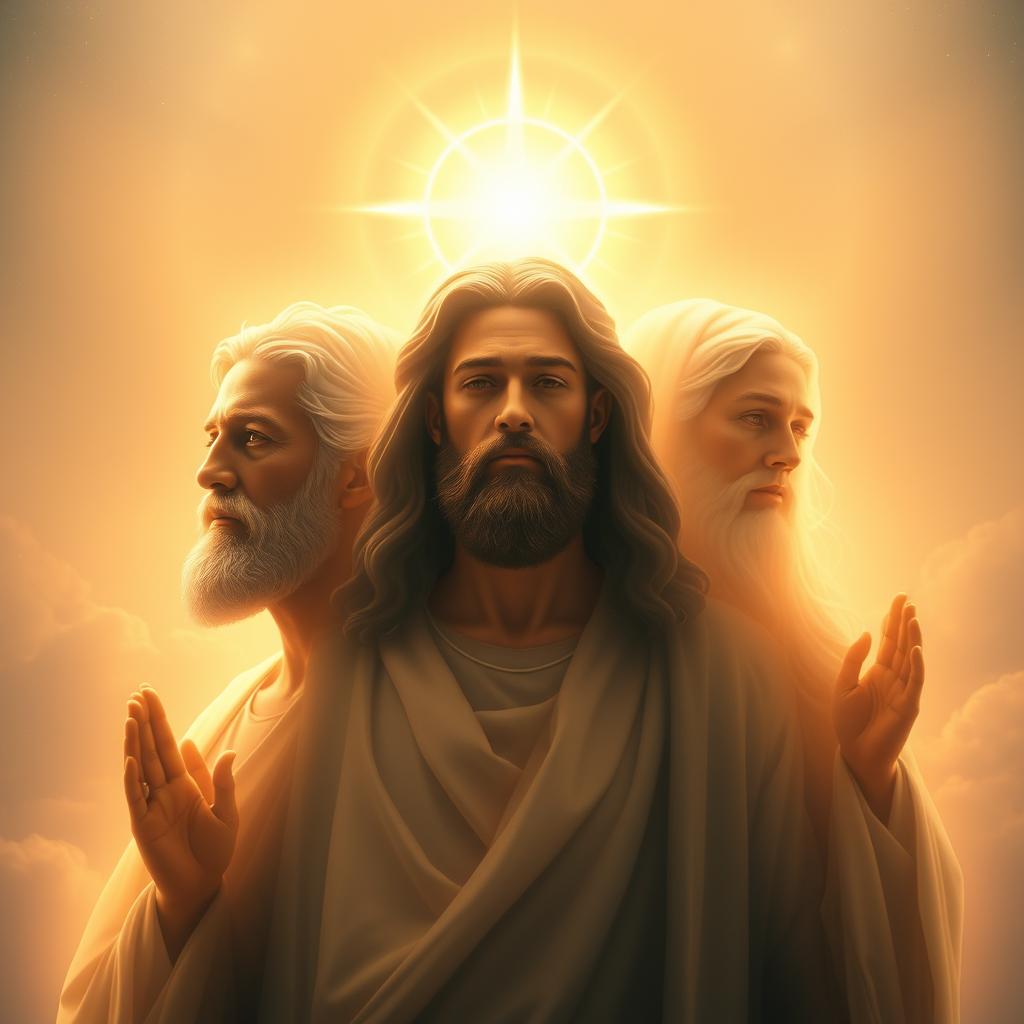
Wisdom’s Role in Creation
The personification of Wisdom in Proverbs 8:22-31 highlights her role in the creation of the world. Wisdom declares, “The Lord begot me, the first-born of his ways, the forerunner of his prodigies of long ago” (Proverbs 8:22). This indicates that Wisdom was present at the beginning of God’s creative process, suggesting a profound relationship between Wisdom and the Creator.
The imagery of Wisdom “playing on the surface of his earth” and “finding delight in the human race” (Proverbs 8:31) reveals God’s joy in creation and special relationship with humanity. This passage beautifully illustrates how the Old Testament contains hidden depths that find their full meaning in the light of Christ and the revelation of the blessed Trinity.
Prefiguring the Trinity
Early Christian interpretation saw in Proverbs 8:22-31 a prefiguration of Christ as the eternal Wisdom of God. This is reflected in John’s Gospel, which identifies Jesus as the Word who “was in the beginning with God” and through whom “all things came to be.” The eternal love between the God Father and the Son is reflected in Wisdom’s declaration that she was God’s “delight day by day” (Proverbs 8:30), which is seen as a reflection of the Trinitarian life.
This reading illuminates the Trinity by showing that God was never a solitary being but always existed in relationship, with Wisdom (later understood as the Son) present at creation. The passage emphasizes the importance of understanding God’s relationship with His creation and humanity, highlighting the way of life that comes from this understanding.
Responsorial Psalm: Psalm 8:4-5, 6-7, 8-9
Psalm 8, with its refrain “O Lord, our God, how wonderful your name in all the earth!”, invites us to contemplate the Trinity through the lens of creation. This psalm is a hymn of awe and praise before God’s grandeur reflected in the grandeur of the human person and of all creation.

The psalmist’s wonder at humanity’s special place in creation—”What is man that you should be mindful of him?”—reflects the dignity bestowed on humans as bearers of God’s image. This dignity is a reflection of the blessed Trinity’s creative love, which extends to the entire universe.
Human Dignity in God’s Creation
The psalm celebrates humanity being “crowned with glory and honor” and given dominion over creation, pointing to our participation in God’s creative and sustaining work. This reflects the holy spirit‘s role in guiding us to care for creation.
When read in light of the Trinity, this psalm reveals how humans, made in God’s image, are called to reflect the communion of divine persons through relationships of love and mutual respect.
Praising the Creator
The cosmic scope of the psalm, encompassing heavens, moon, stars, and all creation, reminds us that the blessed Trinity‘s creative love is vast and all-encompassing. As St. Irenaeus said, “The glory of God is man fully alive,” suggesting that human flourishing manifests God’s Trinitarian glory.
| Aspect of Creation | Reflection of Trinity |
|---|---|
| Human Dignity | Bearers of God’s image, reflecting divine communion |
| Dominion over Creation | Participation in God’s creative and sustaining work |
| Cosmic Scope | Extent of the blessed Trinity’s creative love |
In conclusion, Psalm 8 provides a perfect response to the revelation of Wisdom’s role in creation from the first reading, connecting divine Wisdom with the Creator who is praised. The refrain “O Lord, our God, how wonderful your name in all the earth!” echoes the awe and reverence for the Son and the holy spirit, central to the mystery of the blessed Trinity.
Reading II: Romans 5:1-5
The second reading from Romans 5:1-5 provides profound insights into the Trinitarian structure of our salvation. This passage highlights the collaborative work of the Father, Son, and Holy Spirit in our redemption.
Trinitarian Structure of Salvation
The Apostle Paul begins by stating that “we have been justified by faith,” establishing our right relationship with God the Father through the reconciling work of Jesus Christ, His Son. This justification is a fundamental aspect of our salvation, demonstrating the Trinitarian nature of our faith from the outset.
The passage further explains that “we have peace with God through our Lord Jesus Christ,” underscoring the Son’s unique role as mediator between humanity and the Father. This peace is a direct result of Christ’s sacrifice, illustrating the integral role of the Son in our salvation.
Peace with God Through Christ
Moreover, Paul describes how “the love of God has been poured out into our hearts through the Holy Spirit,” completing the Trinitarian framework of our salvation. The Holy Spirit’s role in infusing God’s love into our hearts is crucial, as it personalizes our experience of salvation.
This reading reveals the practical impact of the Trinity in believers’ lives, showing how the Father initiates salvation, the Son accomplishes it, and the Holy Spirit applies it, fostering faith, hope, and love in our lives.
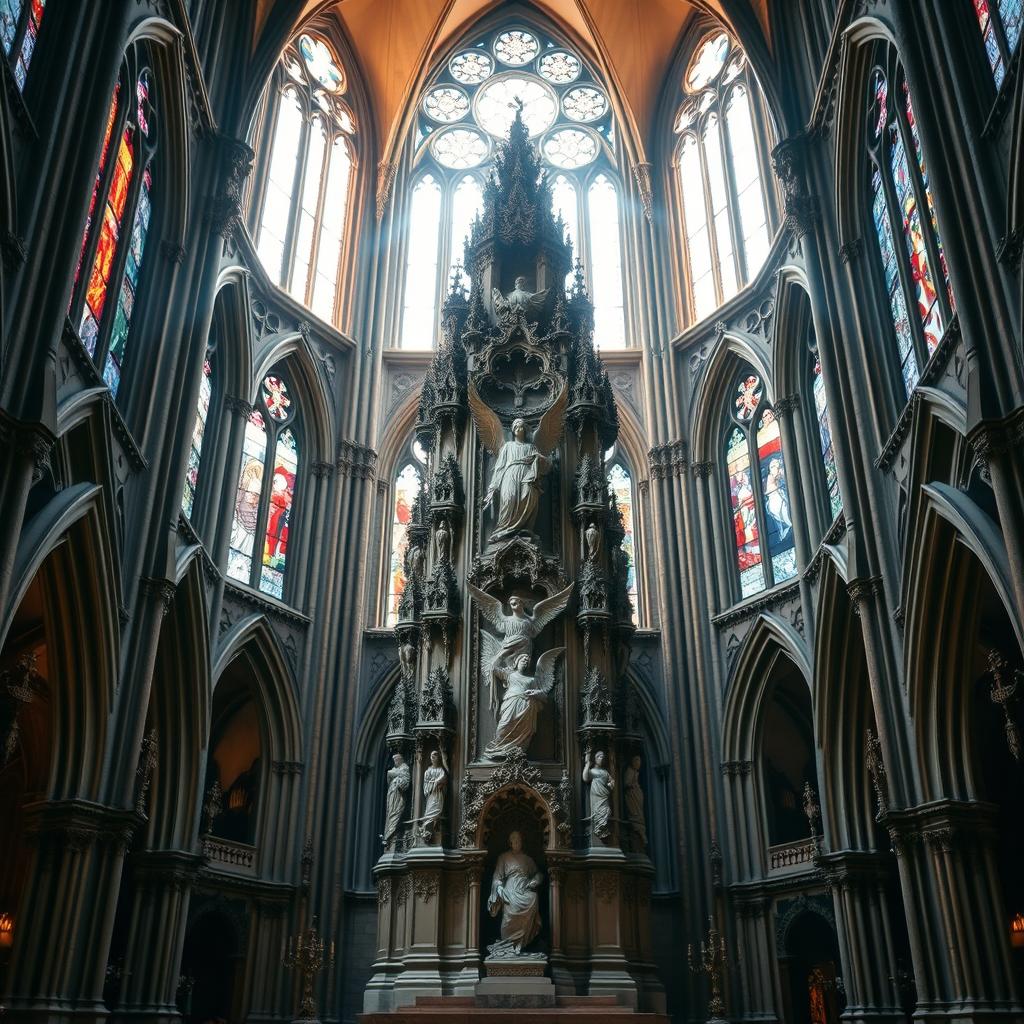
Gospel: John 16:12-15
In John 16:12-15, Jesus illuminates the relationship between the Father, Son, and Holy Spirit, guiding his disciples into all truth. This passage is a profound moment in Jesus’ farewell discourse, where he reveals the intimate connection between the divine Persons of the Trinity.

Jesus Promises the Spirit of Truth
Jesus tells his disciples, “I have much more to tell you, but you cannot bear it now. But when he comes, the Spirit of truth, he will guide you to all truth.” Here, Jesus promises the coming of the Holy Spirit, whom he refers to as the “Spirit of truth.” This promise underscores the Spirit’s role in guiding believers into a deeper understanding of God’s revelation.
The Holy Spirit is not an impersonal force but a divine Person who “will not speak on his own, but he will speak what he hears, and will declare to you the things that are coming.” This highlights the Spirit’s relational nature within the Trinity, emphasizing the harmony and unity between the Father, Son, and Holy Spirit.
The Unity of Father, Son, and Holy Spirit
The passage also reveals the perfect unity and distinct roles of the three divine Persons. Jesus states, “Everything that the Father has is mine; for this reason I told you that he will take from what is mine and declare it to you.” This statement demonstrates the complete communion between the Father and the Son, sharing one divine nature while remaining distinct Persons.
The Trinitarian dynamic here shows that God’s self-disclosure is inherently relational—the Father reveals through the Son by the power of the Holy Spirit. For believers, this passage offers assurance that the same Spirit who guided the apostles continues to lead the Church into a deeper understanding of divine truth throughout history.
Living the Trinity in Daily Life
Living out the mystery of the Holy Trinity involves integrating its truth into every aspect of our lives. It’s about allowing the reality of God’s triune nature to shape our daily spiritual practices and relationships. By doing so, we deepen our understanding of God’s love and reflect this love in our interactions with others.
Prayer to the Trinity
Prayer to the Trinity forms the foundation of Christian devotion. Many traditional prayers address Father, Son, and Holy Spirit both collectively and individually, fostering a deeper connection with God. Through prayers like the Sign of the Cross, we profess our faith in the Holy Trinity, recalling our baptism into Christ and the indwelling of the Trinity within us.
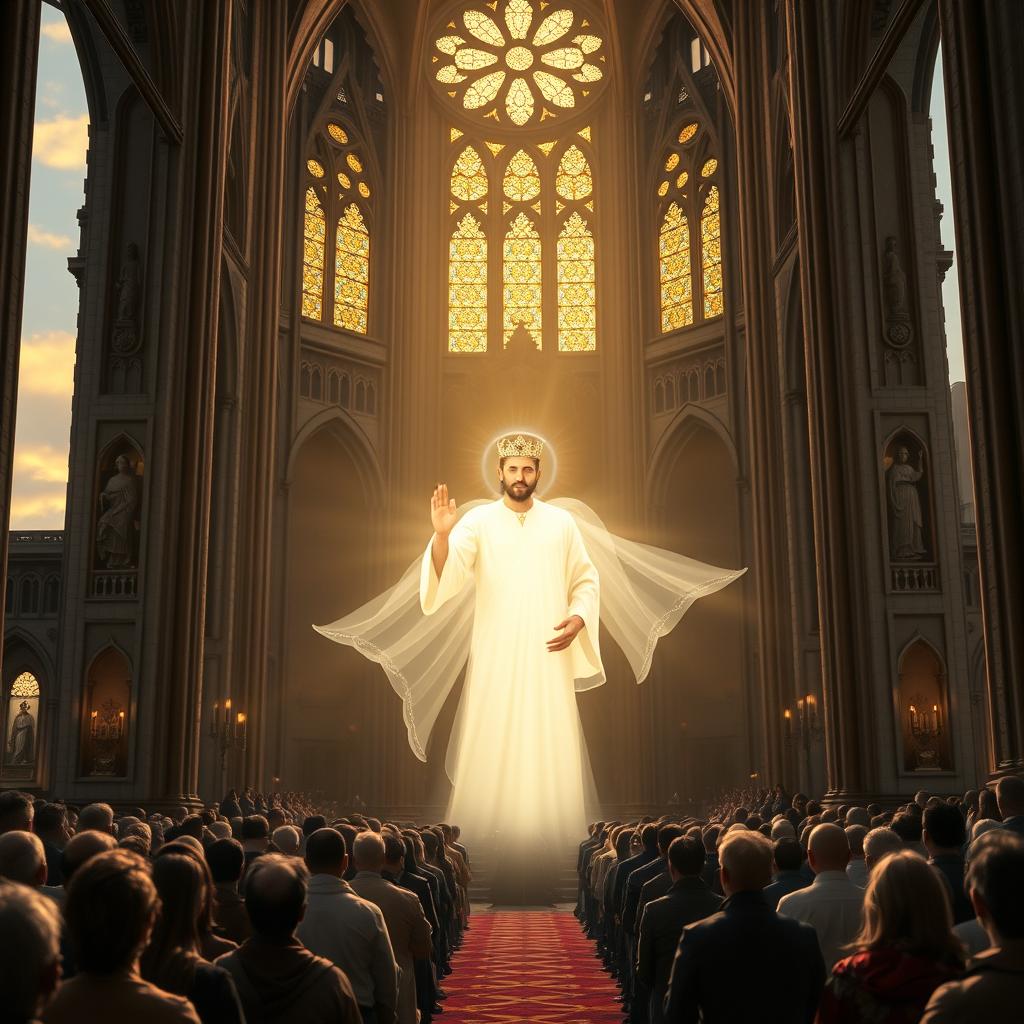
The Sign of the Cross
The Sign of the Cross is a profound profession of faith in the Trinity. It physically traces this mystery onto our bodies, reminding us that we are baptized in the name of the Father, Son, and Holy Spirit. This simple gesture connects us to our baptism and the Trinitarian life, making it a powerful sacramental that protects against evil.
Trinitarian Virtues of Faith, Hope, and Love
The theological virtues of faith, hope, and love reflect the Trinity’s life within us. Faith connects us to God’s truth, hope to His promises, and love to His very essence. By cultivating these virtues, we mirror the Trinitarian relationships in our own lives, characterized by mutual self-giving, respect for distinctiveness, and unity of purpose.
| Trinitarian Virtue | Description | Reflection in Daily Life |
|---|---|---|
| Faith | Connects us to God’s truth | Trust in God’s plan |
| Hope | Anchors us in God’s promises | Perseverance in challenges |
| Love | Embodies God’s essence | Selfless love for others |
By embracing the Holy Trinity in our daily lives, we not only deepen our faith but also transform our relationships and spiritual practices. The Trinity provides the ultimate model for human relationships—distinct persons united in perfect love, each glorifying the others rather than seeking self-glorification.
Embracing the Mystery of the Most Holy Trinity
As we reflect on the Most Holy Trinity, we are drawn into the heart of Christian mystery, where love and communion define God’s being. The Trinity is not a puzzle to be solved but a relationship to be entered—Father, Son, and Holy Spirit invite us into their eternal communion of love.
Throughout the liturgical year, the Church celebrates different aspects of this mystery: the Father’s creative love at Christmas, the Son’s redemptive sacrifice at Easter, and the Holy Spirit’s sanctifying presence at Pentecost. This reveals that at the heart of all reality is not solitude but communion, not power but love, not uniformity but unity-in-diversity.
Embracing the mystery of the Most Holy Trinity means accepting that some divine truths transcend complete human understanding while still enriching our faith journey. The three divine persons work inseparably in all God’s outward actions, maintaining their distinct identities and relationships with each other.
Living in the image of the Trinity means embracing both our unique personhood and our fundamental connectedness to others in the human family. The bread of the Eucharist nourishes us for this Trinitarian way of life, strengthening us to move beyond individualism toward authentic communion. In a world often marked by division, the mystery of one God in three divine persons offers a powerful counter-witness of how differences can exist within perfect unity.
As we conclude our reflection on this central mystery of faith, we recognize that our entire Christian life—from baptism to our final resurrection—is lived within the embrace of Father, Son, and Holy Spirit. The Trinity is not merely a doctrine to believe but the very pattern of existence that gives meaning to our life and destiny to our journey through this world to eternal communion with God.
